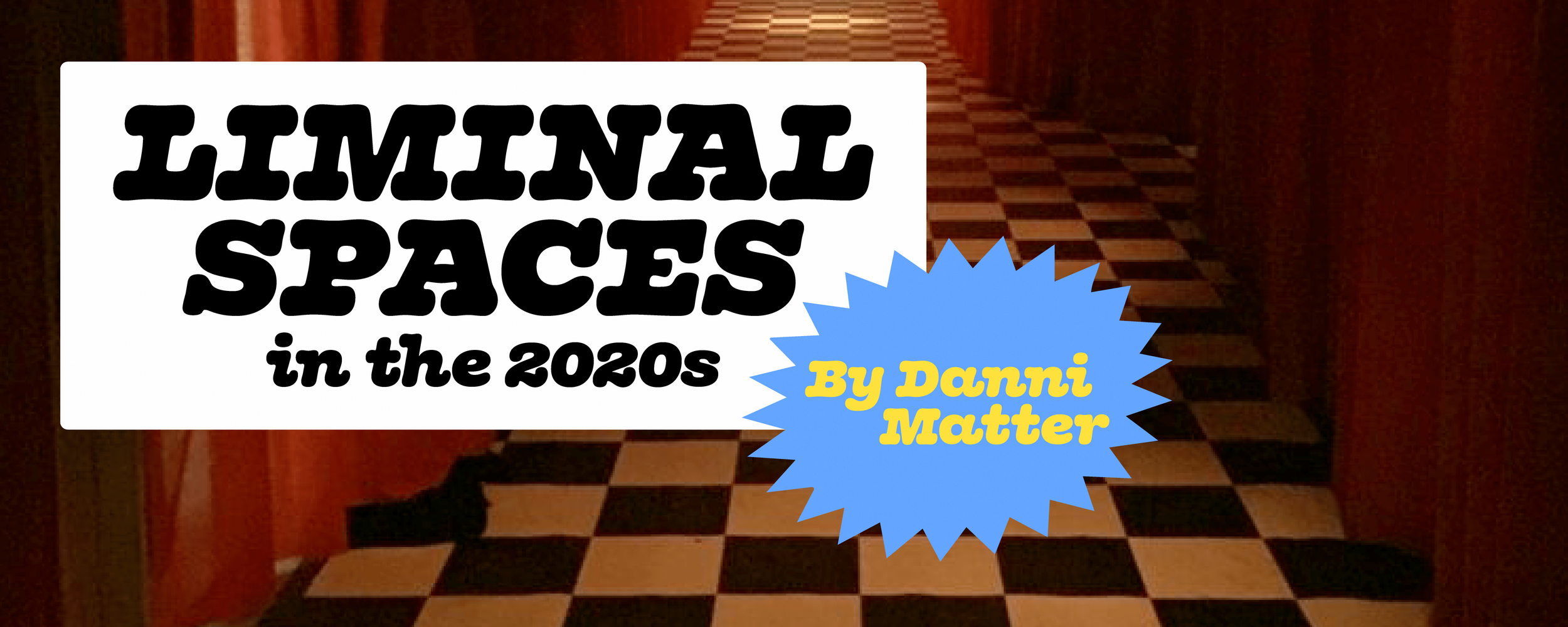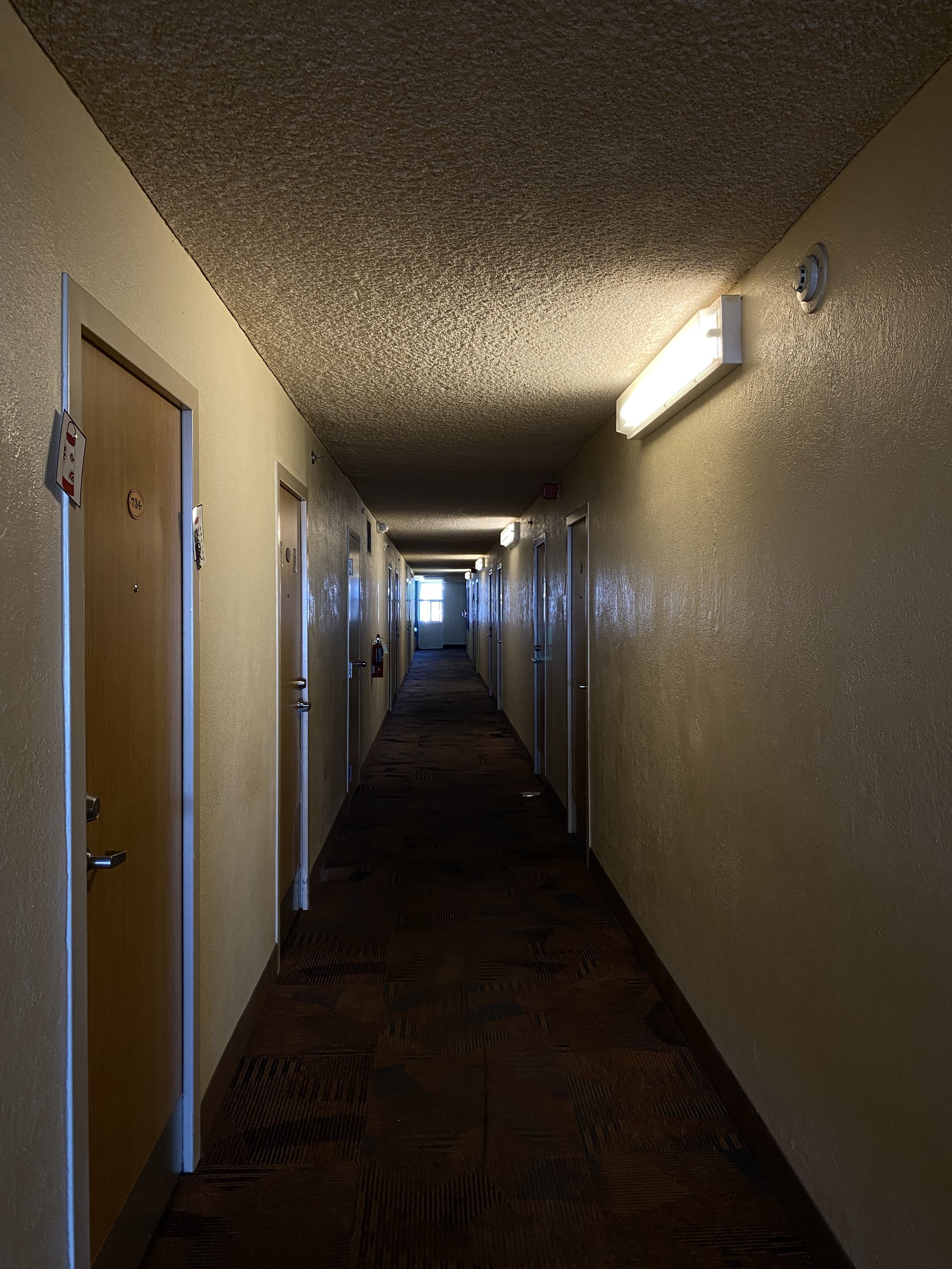Liminal Space in the 2020s
Graphic by Alex Magozzi.
Since their inception, architecture and design have had the ability to invoke different emotions in the people who observe them. I’ve often caught myself feeling strange or apprehensive in seemingly mundane spaces, and have often wondered about the cause. Over the past few years, I’ve begun to notice that I’m not the only one who’s latched on to the idea of places that emit a disconcerting aura. Many people online are interested in photos that depict “liminal space”, but what exactly does that mean?
What is it about these spaces that we find so intriguing?
According to Merriam-Webster, the word “liminal” originates from the Latin noun “limen” — the point at which a physiological or psychological effect begins to be produced. Today, “liminal” is used to describe something that is situated at a threshold, or encapsulates transience. Although liminality as a concept has been the subject of research and debate for centuries, its popularity has risen significantly over the last few years.
Liminal space as an aesthetic began trending online starting in the late 2010s, although people have been sharing photos that fit the aesthetic on a smaller scale for many years. Liminality was originally referenced more often in the discussion of psychology or philosophy; it has always been defined as referring to a threshold or transitionary period, but has rarely been applied to the concepts of space and architecture.
On May 12, 2019, a 4chan post by an anonymous user asked the /x/ paranormal board to "post disquieting images that just feel 'off'".
Photo by Lucas Rackliffe.
The photo that accompanied the post featured an empty office space, with no visible furniture, windows or doors. This image, along with the subsequent comments on the thread, sparked the “Backrooms” internet phenomenon. Since then, several online communities have emerged that are dedicated to the showcasing of liminal space. Photos of deserted malls, hotel hallways, and playgrounds at night fill Twitter feeds and forum threads, posted by users who feel they trigger a sense of unease. A video game called The Backrooms has even been created, named after the title given to the infamous photo.
When visiting these online communities, such as the Reddit community r/LiminalSpace, one of the first things you see is a list of guidelines for posting photos and stories.
Although as mentioned the concept of liminality is well defined, the aesthetic is still quite abstract.
People may disagree on whether a photo adequately depicts liminal space, which suggests the list of requirements is somewhat subjective. The Aesthetics Wiki states “it should be noted that liminal space aesthetics have expanded in scope to include images of places that are simply nostalgic, dreamlike, and/or uncanny, to the point where the only remaining common trait across these ramifications is the striking absence of people.”
Creator unknown.
This suggests that individual experiences may also contribute heavily to the emotions people feel (or don’t feel) when observing the Backrooms or similar spaces. However, collective experiences (especially of the Millennial and Gen Z generations) have allowed these types of spaces to spark a reaction in enough people for a trend to begin. The Aesthetics Wiki also goes on to mention how photos of deserted businesses or homes and outdated decor appeal to existing feelings of nostalgia and sadness regarding the passage of time.
Nostalgia is a driving force culturally, and seems to be more prominent than ever in the era of COVID-19.
In fact, liminal spaces experienced a huge spike in popularity during the shutdown of 2020. Places that we had never seen empty before, such as Times Square in New York City, were almost devoid of human life. Major roads were completely silent. People weren’t able to leave their homes to see their friends and family. Nobody knew what was going to happen, or what the future would be like. As such, feelings of nostalgia and isolation were suddenly on the rise among a huge number of people. Many popular liminal space photos actually depict fixtures of early childhood life for Millennials and Gen Z; this may also be the reason they may seem dream-like.
Memories of childhood seem hazy and distant, qualities which make them comparable to dreams.
Still from the Backrooms video game.
In this sense, liminal space can be interpreted as referring to the threshold between memory and reality, or consciousness and subconsciousness.
There are other concepts also used to define whether something fits into the aesthetic, such as anemoia.
Anemoia refers to a feeling of nostalgia for a past that you never actually lived, or a time period during which you weren’t alive.
This makes sense when you look at it from the standpoint of young people today - many of us feel let down by the lack of opportunity and promise in our lives. Vaporwave is another popular aesthetic that likely ties into this as well, featuring imagery and design that was popular in the 1980s and 1990s. Much like nostalgia, anemoia likely stems from a desire to escape to a time where it felt like there was a future to look forward to, or when we imagine life was easier.
Photo by Bergen Flom.
Aside from the types of places depicted, the design elements present in certain buildings themselves may be a reason they seem so eerie. When observing a familiar place, such as the interior of a house, elements that deviate from what you are used to seeing in similar environments may trigger responses of fear or disgust in your brain. This is known as “deviation from familiarity” and refers to the uncanniness of something seeming “not quite right”. A study by Alexander Diel and Michael Lewis on this phenomenon found that this feeling of uncanniness is driven by the presence and number of spatial anomalies in a physical place. These anomalies may include lack of, repeating, displaced, or proportionally distorted features. Our defensive response to these anomalies likely developed as a way to avoid danger before it is fully visible, which would have aided in the survival of early humans.
Although it seems a bit depressing, the liminal space trend is just another way to process all of the changes we’ve witnessed during our lives.
People may find catharsis in looking at images that they feel capture the essence of what they’re experiencing, such as hopelessness or loss of direction. In order to survive, it is necessary to have coping mechanisms, and for some those include a fixation on places that have been abandoned by time. The trend has also sparked creativity in the form of fictional stories written about “Backrooms” type images, as well as the aforementioned video game.
Photo by Corinne Davidson.
Ultimately, it’s fascinating how much the liminal space aesthetic can tell us about our collective state of mind as young people in America.
Art changes along with shifts in society and culture – in this case our culture’s lack of community and uncertainty about the future is represented by an endless virtual corridor that you’re desperately trying to escape from. I believe it’s possible to bring life to the Backrooms again, if at any point we’re able to come together and transform these empty shells into places to live or gather in. Until then, we’ll continue to enjoy them for the uncanny chills they give us.
Sources:
Diel, Alexander, and Michael Lewis. “Structural Deviations Drive an Uncanny Valley of Physical Places.” ScienceDirect, 10 July 2022, www.sciencedirect.com/science/article/pii/S0272494422000895?via%3Dihub.
Zamecnik, Adam. “How Liminal Spaces Became the Internet’s Latest Obsession.” 2.1 Mag, 18 June 2021, twopointonemag.com/how-liminal-spaces-became-the-internets-latest-obsession.
If you are the creator of the second photograph in this article, please let us know and we will properly credit you! Thank you — TRASH MAG Team.





